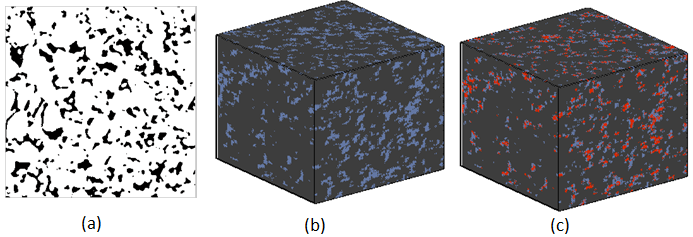Numerical Simulation of NMR Response in 3D Digital Cores Reconstructed by MCMC Method
- State Key Laboratory of Petroleum Resource and Prospecting, China University of Petroleum, Beijing, China
Nuclear Magnetic Resonance (NMR) technology has been widely used in formation evaluation and petrophysics study. Monte Carlo Random Walk algorithm is one of the fast and effective numerical simulation methods in the study of NMR response in rocks, generally we obtain three dimensional (3D) digital cores using X-ray scanning experiment (Micro-CT), which is very time consuming and expensive, hence it's of great value using reconstructed 3D digital cores by two dimensional (2D) thin sections to study the NMR response in rocks.
This paper reconstructed 3D digital cores from 2D thin sections by Markov Chain Monte Carlo (MCMC) method [1] . We selected three perpendicular thin sections from the reconstructed 3D digital core, then calculated the auto-correlation function, variogram function and the linear path function of the original 2D thin section and the three selected perpendicular thin sections to evaluate the accuracy of the reconstructed 3D digital cores. For both digital cores obtained from Micro-CT and reconstruction, we simulated the magnetization decay of CPMG pulse sequence with different echo spacings under a magnetic field gradient by Monte Carlo Random Walk algorithm [2] , the corresponding T2 distributions and D-T2maps are obtained with inversion method. Based on the reconstructed 3D digital core, this paper analyzed the influences of surface relaxivity, fluid saturation and echo spacing on NMR response. The result shows that the NMR response simulated in reconstructed 3D digital core are similar to those in 3D digital core obtained from Micro-CT, which suggests that the MCMC method can replace Micro-CT method to obtain the 3D digital core used in numerical simulation of NMR response.
Acknowledgements
This project was funded by the National Natural Science Foundation of China-China National Petroleum Corporation Petrochemical Engineering United Fund (U1262114).


